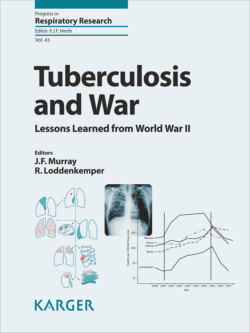Читать книгу Tuberculosis and War - Группа авторов - Страница 24
На сайте Литреса книга снята с продажи.
Hundred Years’ War
ОглавлениеThe Hundred Years’ War actually lasted 116 years during the late Middle Ages. Traditionally, the war has been differentiated into 3 phases separated by 2 truces: first, the Edwardian Era War (1337–1360); second, the Caroline War (1369–1389); and lastly the 2-part Lancastrian War (1415–1453). Five generations of Kings, both of England and France, fought over the succession of rulers and control of large landholdings within the territory of France [75]. The events during one of the longest wars in military history led to considerable social, political, and economic turmoil. At the beginning of the war, for example, there was a switch from a major fighting role of armies of knights and nobles to the use of professional soldiers; and toward the end (1445), the first standing army since the conclusion of the Roman Empire was established in France to combat marauding militias. Weapons and strategy changed dramatically from the early utility of cavalry, to the efficacy of the longbow (English), and then artillery (French). Both countries suffered substantial population losses from intermittent warfare plus deaths from the bubonic plague [76]. Dysentery played a major role in the 1415 Battle of Agincourt. Fifty percent of the French population died during the One Hundred Years’ War, including 3-quarters of the population of Normandy and two-thirds of that in Paris. England was less affected than France, because all the battles and movements of armies occurred on the continent. After the loss of its continental holdings, except for the Pale of Calais, England was reduced to an island nation, but not long afterward took advantage of its maritime proficiency to begin exploring and gaining mastery of much of the world.
